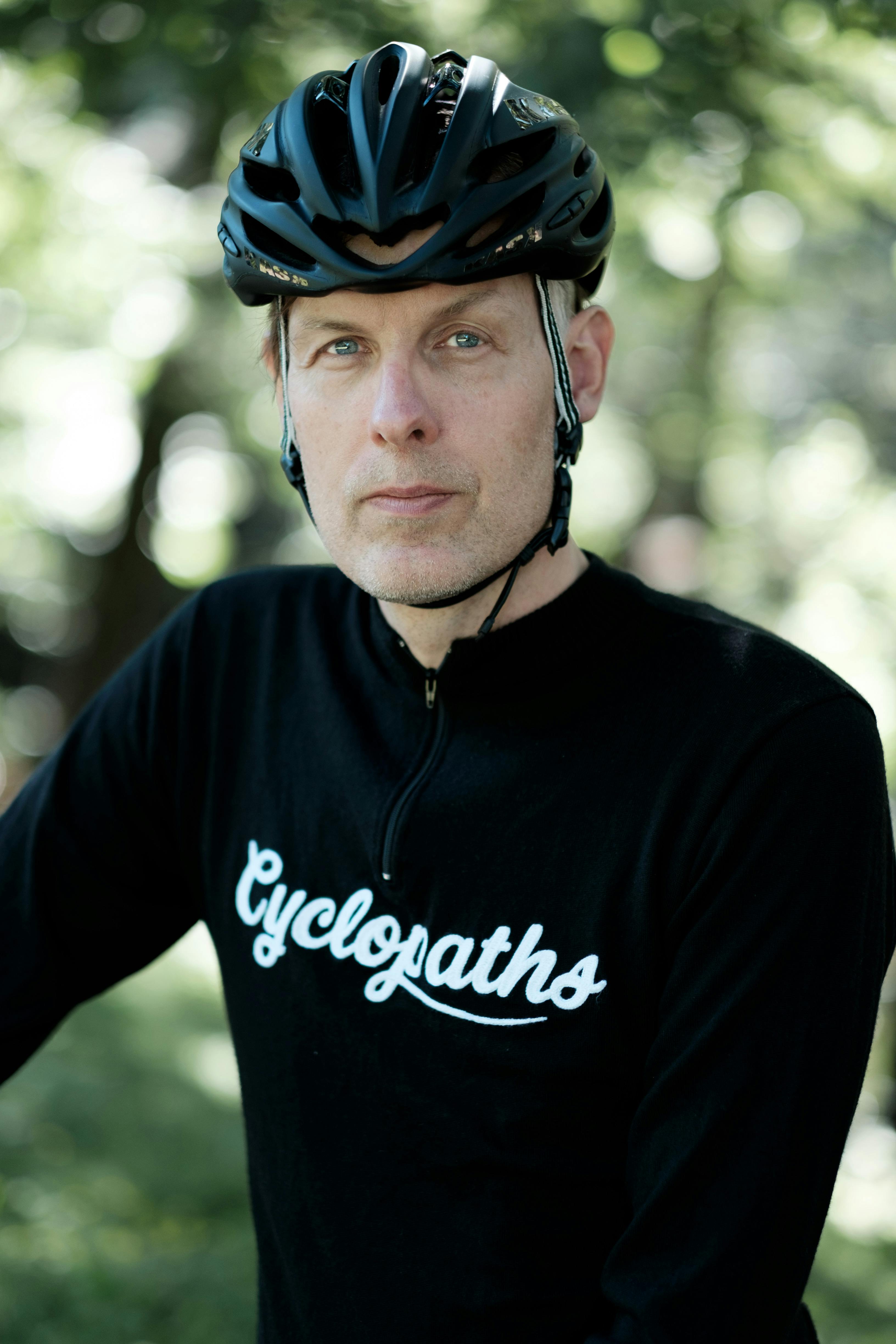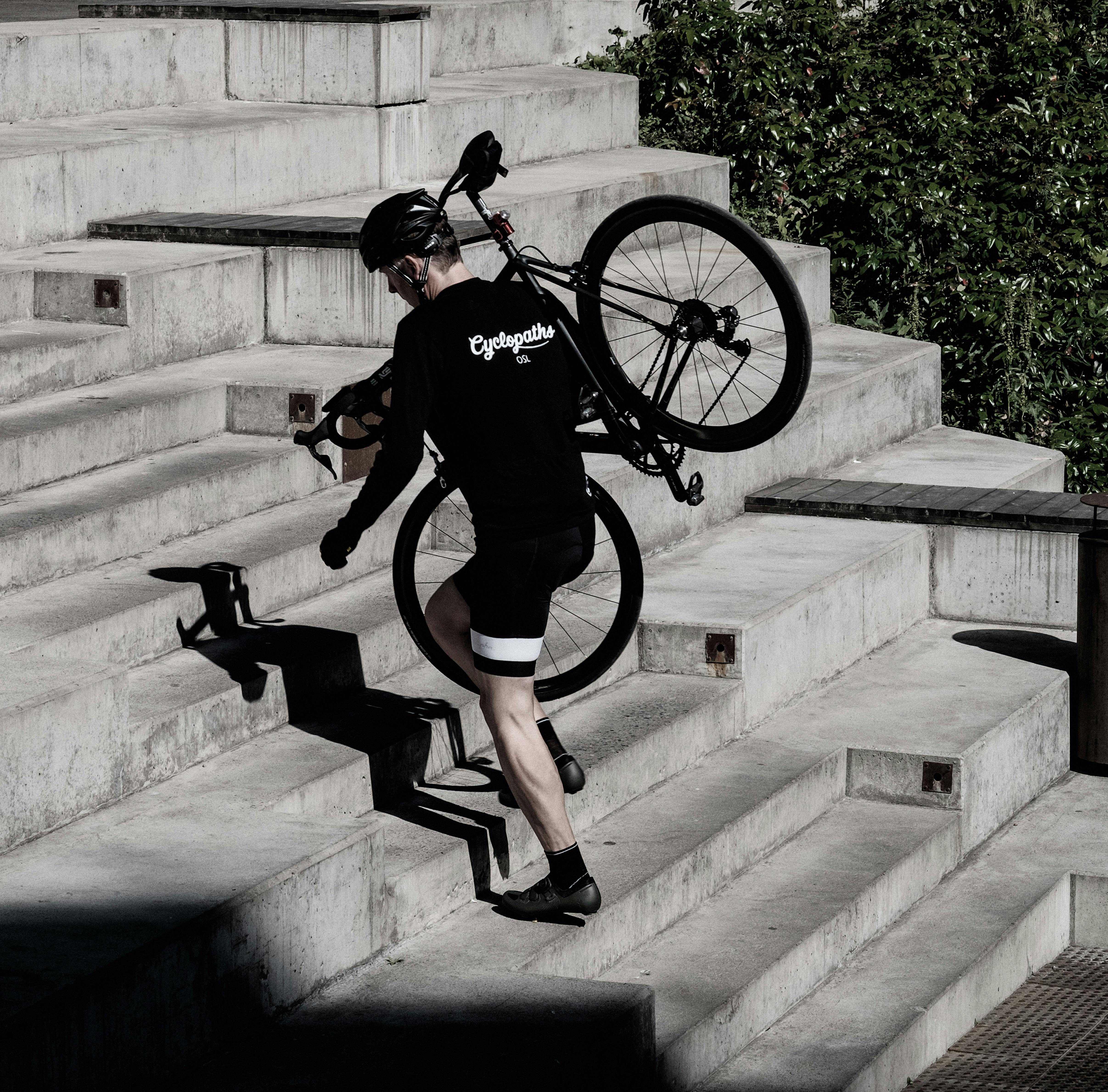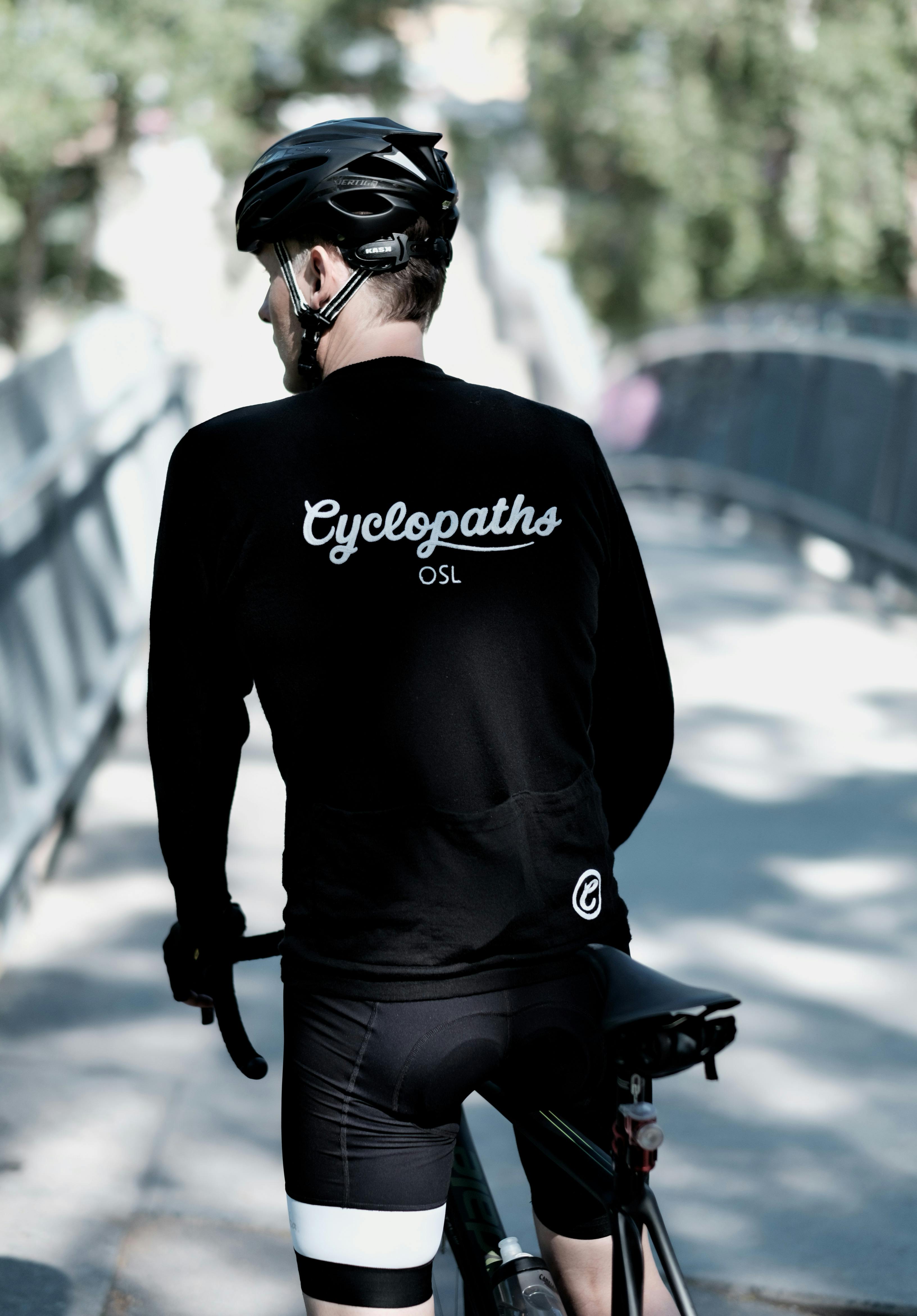Halvor Bodin
Oslo is a fantastic city for bicycling, meaning that it is such a short ride to the countryside and the hilly woods. Maridalen is by far my favourite for road cycling: it is a beautiful valley a mere fifteen minute ride from the city center. I also enjoy singletrack riding and gravelgrinding anywhere in the huge forests surrounding the city.

Edited by: Mari Oshaug
Photos: Pål Laukli
Job: Graphic designer and artist
Area of Oslo: Uranienborg, Frogner and Majorstuen
Bicycle: Road bikes, cyclocross, full suspension bikes, hardtail, singlespeed and one-wheeler.
• What is your relationship with bicycling?
I always walk to work, as the distance between home, kindergarten and office is too short for biking. For meetings and errands downtown I bike or walk. I own a Land Cruiser, but it is almost exclusively used for longer trips outside the city. Last time I used it, it was covered in pollen and sap. It had been in the same place for over a month.
I mainly do road cycling, and prefer longer trips (100 to 300 km) whenever I have the time. I don’t compete. Biking is simply a lifelong interest and my preferred way of exercise. And yes – I shave my legs. I also bike on trails, mountains and downhill, with studded tires during the winter and on an interactive trainer indoors. I use real life videos, Google Earth and compete against a mate in London via the Net.
My spouse bikes both road and mountain, and we use a bicycle trailer for our daughter who is almost three years old. We attach the trailer on the racer, cyclocross or mountain bike and take off for the beach or hills. We always take them with us on vacation. As parents it is our responsibility to show the kids that bicycling is normal and fun.
How much I bike varies a lot. Some weeks I don’t bike at all, while the next week I might put 400 km behind me. In 2014 I spent 181 hours on a bike: with a total of 3700 km and 105 rides. The numbers increase every year, and I’m going to pass this by far in 2015.

• What are your thoughts on Oslo as a bicycle city?
Most cyclists are also motorists and pedestrians. However, some motorists are not so keen on biking and believe that streets are mainly there for cars. I used to be a taxi driver in Oslo, so when I take the role as a cyclist in the city I have a foundation for navigating in traffic and I try to act much like a motorist. Biking in a city is never without risk, and you should be slightly afraid and very observant, and act consistently. I use lights at daytime, as the motorists do.
I prefer to bike on the road, and use bike lanes where I need to. It is no secret that the cycle paths of Oslo are incoherent. Physical separations between the different traffic groups are missed. It feels unsafe to bike with a child in the bike trailer through the city.
Bicycling is both ethics and aesthetics. The bicycle trend in Oslo is increasing. It does not matter if it’s all about moustaches and retro-fixies or carbon/ceramic bearings/Rapha/Strava. All good as long as people are biking. It’s excellent that several bicycle cafés are starting up in town. Anything that will get young people interested in bicycling is much welcomed.
• What can Oslo learn from other bicycle cities like Copenhagen and Berlin?
What Oslo is missing is longterm and visionary urban planning, political will and capability. People also need to pull themselves together and take more responsibility for their own health and the community, park the car and get on a bike. I have biked in Berlin, London and Paris on a road bike. Perhaps it is not all about separating the traffic groups, maybe it is more important to try to coexist seamlessly in the same city space. London is surprisingly easy to bike in, partly because the traffic is constantly heavy and slow, but there is also a notable will to share the sparse common space.

• If you were given the means to initiate a bicycle-related project in Oslo, what would it be and why?
I choose utopias rather than realpolitik: An Oslo without cars would be a nice project. The national spokesperson for the Green Party (MPG) once said: “To achieve something, we cannot insist that everyone must live in cold houses, become vegans and never use a car.” I disagree; I actually do believe we need to change the way we live drastically in order to contribute to a liveable world in the future. I have no respect for people who find the idea of one meatless day a week unthinkable.
Most Norwegians have adapted to excessive comfort and indulgence in food choices, housing and transport. This has obvious implications for the climate, personal- and public health and animal welfare. It’s all about economic, structural and political interests as well as personal ignorance and gluttony.
• What is your favourite place in Oslo to bike, and why?
Oslo is a fantastic city for bicycling, meaning that it is such a short ride to the countryside and the hilly woods. Maridalen is by far my favourite for road cycling: it is a beautiful valley a mere fifteen minute ride from the city center. I also enjoy singletrack riding and gravelgrinding anywhere in the huge forests surrounding the city.